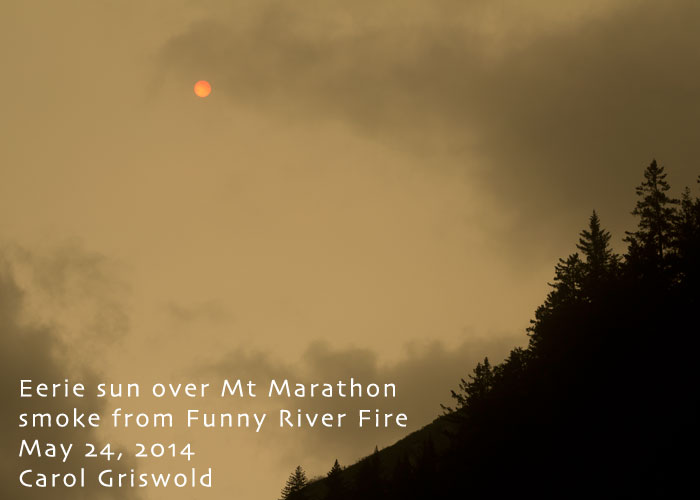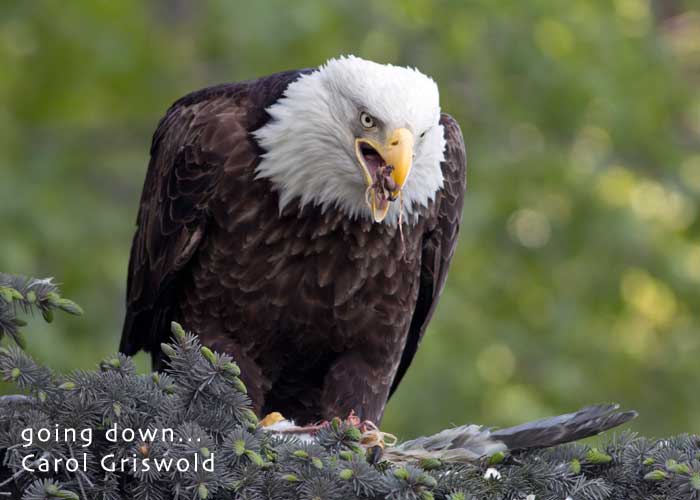Sunrise 4:46 am, sunset 11:05
pm for a total day length of 18 hours, 18 minutes. Tomorrow will be 3 minutes
and 16 seconds longer.
Torrential rain hammered down
yesterday afternoon and all night, a real soaker. Mt Marathon and other high
peaks wore a new white cloak this morning and the Race Point sported a lacy
white shawl. Brrrr! The south wind blasted in by afternoon, cold and strong at
10-17 mph gusting to 28 mph at times. The temperature apparently rose to 51º
but felt much colder. Sprinkles alternated with brief bursts of sunshine and
blue sky, but dark clouds chaperoned any summery aspirations. It seems like we
already had summer, followed by fall's rain, and now termination dust. What's next? What a May!
I did the COASST survey at
the head of the bay, no dead birds. Instead I found a lone BAR-TAILED GODWIT
foraging along the beach. I first spotted it flying along the incoming tide's
edge, harassed by ARCTIC TERNS who didn't bother to inquire who, exactly, it
was.
One would think they might
welcome yet another incredible long-distance flyer. Or maybe they were jealous
of this species' record as the longest non-stop bird migration of 7,145 miles,
from Alaska to New Zealand. Those terns fly as far, or farther, but take breaks
on the ocean to eat and rest.
A banded Bar-Tailed Godwit
did the journey all the way across the immense Pacific Ocean in nine days.
Non-stop flying. Absolutely mind-boggling.
<http://news.nationalgeographic.com/news/2007/09/070913-longest-flight.html>
Birdnote by Nils Warnock:
<http://birdnote.org/show/bar-tailed-godwit-migration-featuring-nils-warnock>
After getting a long-distance
photo that revealed the bars on the tail, I lost it on the tide flats. A while
later, I spotted it again, much closer, feeding. After such a long flight, it
must have been extremely hungry! The long, slightly upturned bill was very
slightly pinkish at the base, and the colors muted. I'm guessing it’s a female.
In the foreground, several
SEMIPALMATED PLOVERS worked the sand with their characteristic stop-start
behavior. Nearby, a SEMIPALMATED SANDPIPER walked along in their company,
probing for tiny invertebrates.
It was tricky to get good
photos with the wind trying to help, but I am pleased to document all these amazing
birds, each so special and extraordinary in their own way.
Check out this link to
Moonbird, a 21-year old RED KNOT who has flown enough miles to travel to the
moon and halfway back on his 20,000 round-trip migration from the Arctic
breeding grounds to the tip of South America.
<http://www.grindtv.com/outdoor/nature/post/the-amazing-moonbird-still-going-strong-at-21/>
Happy Birding!
Carol Griswold
Seward Sporadic Bird Report
Reporter




















































